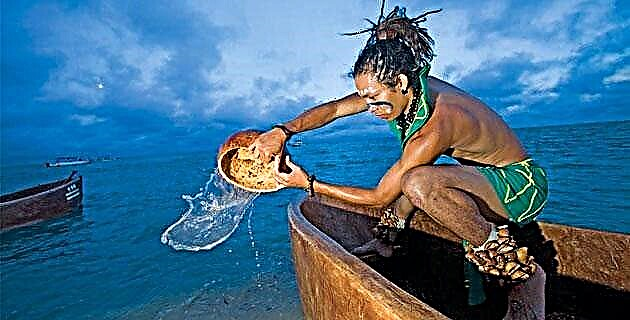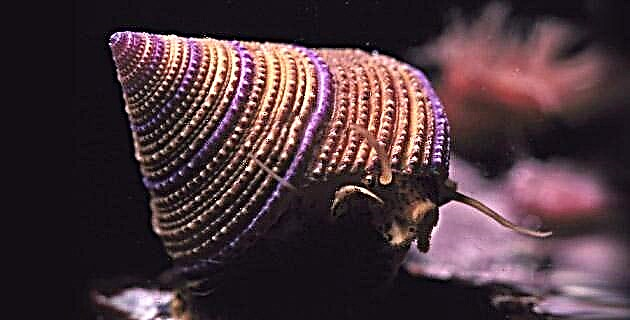
During the splendor of pre-Hispanic cultures such as the Mayan, Mexica and Totonac, as well as among the Phoenicians, Greeks and Romans, snails were used for religious purposes.
Almost a decade ago, shortly after diving in Cozumel with an excellent protector of our seas, Ramón Bravo, I remember that I suggested we eat seafood, and then he commented: “I avoid eating conch-based dishes, as I consider that I contribute this way, at least a little, to the conservation of marine life ”.
Many years earlier, another great scholar of marine life, Jacques Ives Cousteau, said: "Gastropod mollusks can be considered endangered species almost anywhere on the planet."
Snails belong to the class of mollusks and today they include thousands of species of various shapes and sizes. In the animal world, mollusks represent the second group in numerical importance of the species that have been described, of which there are more than 130 thousand living species and around 35 thousand in a fossil state; only insects outnumber them. Its ecological importance is fundamentally due to the great diversity of characteristics and behaviors: most can be at different levels in the trophic networks throughout their life cycle, such as in the stage of trocófora and velíger swimming larvae, which later as adults they occupy ecosystems of whose balance they are part.
Mollusks, whose Latin name, mollis, means "soft", are made up of a large and heterogeneous group of animals that show little structural similarity to each other; However, the body organization of all of them follows a basic pattern derived from the same common ancestor, originated shortly before the Cambrian period, 500 million years ago, when they crawled on rocks and smooth shallow water bottoms.
The extensive geological history of snails is due to their mineral shell, which made possible their conservation in fossilization processes and which has provided a rich chronological record. With the back covered by a convex shield, protecting the internal organs, from the beginning, this dense cuticle of horny organic material called conchiolin, was later reinforced with calcium carbonate crystals.
Snails are among the most diversified invertebrates, and their single shell, helically wound, creates infinite structures: flattened, rounded, spiny, elongated, smooth, stellate and ornate. Their average size ranges between 2 and 6 cm in length, but there are smaller and much larger ones. In other groups of mollusks, some species are larger, such as the bivalve Tridacna of the South Pacific, with 1.5 m in diameter, or those squid and giant octopuses of the cephalopod group that reach more than one meter in length.
INFINITE STRUCTURES AND COLORS
Among the most common are the gastropod mollusks, better known as shells or snails. These are soft-bodied animals that would not be more attractive if it were not for their shells, considered masterpieces of nature, which vary from 1 to 40 cm in length. The bright coloration in coastal and coral reef species contrasts with the dark tones of those with shaded habitat and rocky substratum; thus we have that each snail is the result of an adaptation to its environment, where some species reserve the beauty and intensity of their colors for their interior.
Gastropods have experienced the widest adaptive radiation among mollusks and are the most prosperous; They are distributed in all latitudes in almost any environment, where they occupy sandy and muddy bottoms and rocky cavities, corals, sunken ships and mangroves, and even survive out of the water, on the rocks where the waves break; others invaded the fresh waters and adapted to almost all the conditions of aquatic environments at different altitudes and latitudes; and the lungfish have lost their gills and turned into a lung mantle, to conquer the terrestrial surface where they populate jungles, forests and deserts, and even inhabit the limits of the eternal snows.
Throughout history these beautiful creations made by a simple invertebrate have exerted a special attraction among scientists, nobles, and ordinary people. Most of the people who visit the beaches and find a snail, they take it home and often only take into account its bodily beauty to decorate a piece of furniture or the interior of a showcase; However, collectors classify their specimens in an orderly manner, while the vast majority prefer to appreciate them for their pleasant flavor, and on our warm coasts they even acquire mythical aphrodisiac properties.
These animals have had a profound impact on human culture, and since ancient times many peoples have used them for religious, economic, artistic and entertainment purposes. Some species have been valued for their great religious significance held throughout the history of various cultures, where they have been used as offerings and ornaments for certain gods and structures. Thus, during the splendor of pre-Hispanic cultures such as the Mayan, the Mexica and the Totonac. they played an important role in his worldview; The same as among the Phoenicians, Egyptians, Greeks, Romans and others, who also used them as food, offering, jewelry, currency, weapons, music, for decoration and communication, and even in obtaining dyes to dye the clothes of the noble classes .
For a country like Mexico, which has extensive coastlines, sea snails represent an important resource that provides several sources of employment for fishermen, cooks, vendors, and artisans, as well as professionals in marine science, biology, and aquaculture. On the other hand, its specific diversity has made it possible to develop research projects and generate basic information about the group, which helps to make precise decisions in the management of the large gastropod class.
THE PROTECTION AND THREAT OF SPECIES
Currently, on our coasts, most of the large species, edible or showy, are affected by overcapture, as is the case of abalones (Haliotis), hoofs (Cassis), pink murex (Hexaplex) and Black murex (Muricanthus), or Purple snails (Purpura patula) in the Pacific; Similarly, in the Gulf of Mexico and the Caribbean, the largest snails, such as the queen conch (Strombus gigas), the newt (Charonia variegata), the gigantic chacpel (Pleuroploca gigantea), the rare goat (Busycon contrarium), the lustrous cowries (Cypraea zebra), the spiny goat (Melongena corona) and the tulip (Fasciolaria tulipa), as well as those scarce, with striking tones, or because their muscular foot can be commercial.
In Mexico and the world, the rarity of numerous species represents an alarm of potential extinction, because there is no precise global regulation for their preservation; today scientists and fishermen have found that there is practically no place where their extraction has not damaged their populations. In our country it is necessary to protect as a priority many species of snails that have been drastically affected; promote adequate commercial exploitation programs and carry out precise studies on threatened species.
The number of local species is high, because almost 1 000 species have been described for North America and 6 500 for all of America, with whom we share a large number of them, since only in the waters of the Gulf of Mexico more than two hundred have been recorded of snails with external shell, which are part of the gastropod and bivalve class. Although as a whole this marine fauna is still considered abundant, we know that it is difficult to find inaccessible places as in previous centuries, everything is inhabited and there are almost no limits to our predatory capacity.
From elementary school, today's children study ecology, become aware of environmental issues and learn about the relationships between organisms, the environment and man. Perhaps this environmental education limits the impact on marine life, it is never too late; But if this rate continues, the devastation can be more dramatic than in terrestrial ecosystems. These descendants of some of the first life forms on the planet could disappear, and they are definitely beautiful works of art, which with infinite colors and shapes amaze the consummate artist, seduce the common people and their delicate structure satisfies the most demanding collector; It matters little, if they are only creations made by an invertebrate animal, which always carries its house on its back.
Source: Unknown Mexico No. 273 / November 1999











